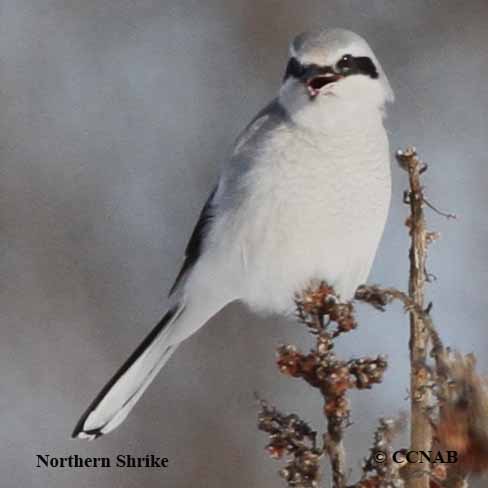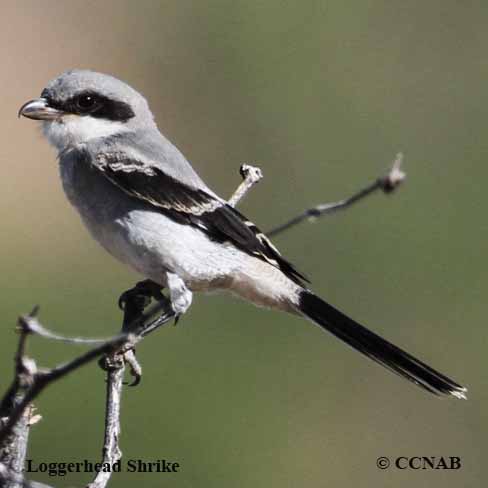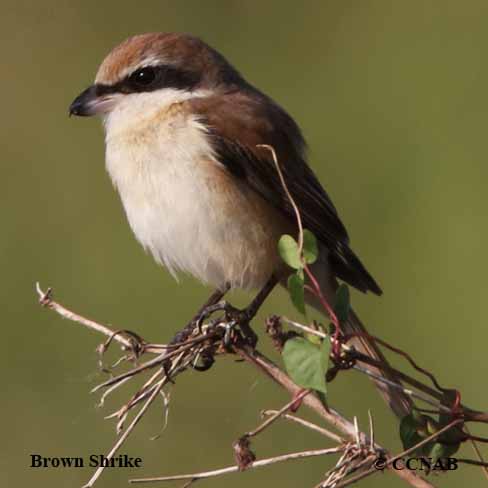from Birds of North America

There are two common types of shrikes in North America. Each of these birds has found their own habitat and ranges on the continent. The Northern Shrike spends the warmer months in the central to northern regions in Canada and shows up in the southern portions of Canada and northern regions of the United States in the winter months. The Loggerhead Shrike, once one of the most popular North American birds, is disappearing from its northern boundaries but is still common in the southern states. A third shrike named the Brown Shrike is a vagrant from Asia.
The shrikes are some of the smallest birds of prey in North America. These robin-sized birds feed on a variety of foods. The food depends on the season and its’ abundance. The food includes small rodents, small birds, reptiles, amphibians and insects. Shrikes are known for impaling their victims on thorn bushes and barbed wire fences as a means of storing them to be eaten at another time.
Northern Shrike
The Northern Shrike is the most abundant shrike seen in North America. It is known as the “butcher bird” because of its ferociousness when attacking its prey. It feeds on insects, amphibians, rodents and small birds. It nests in the far north on the tundra.


Loggerhead Shrike
The Loggerhead Shrike is the smaller of the two native shrikes seen in North America. This bird species is common across the southern states of the US but is struggling to survive in the southern regions of Canada. Especially so in Ontario, where large efforts are being made to reintroduce these birds back into their known habitat of the past.


Brown Shrike
The Brown Shrike is a smaller member of the Asian shrike family. It is a common native bird that has been seen from time to time, along the Pacific coast of North America, usually during the fall migration period. It is recognized as a vagrant.

